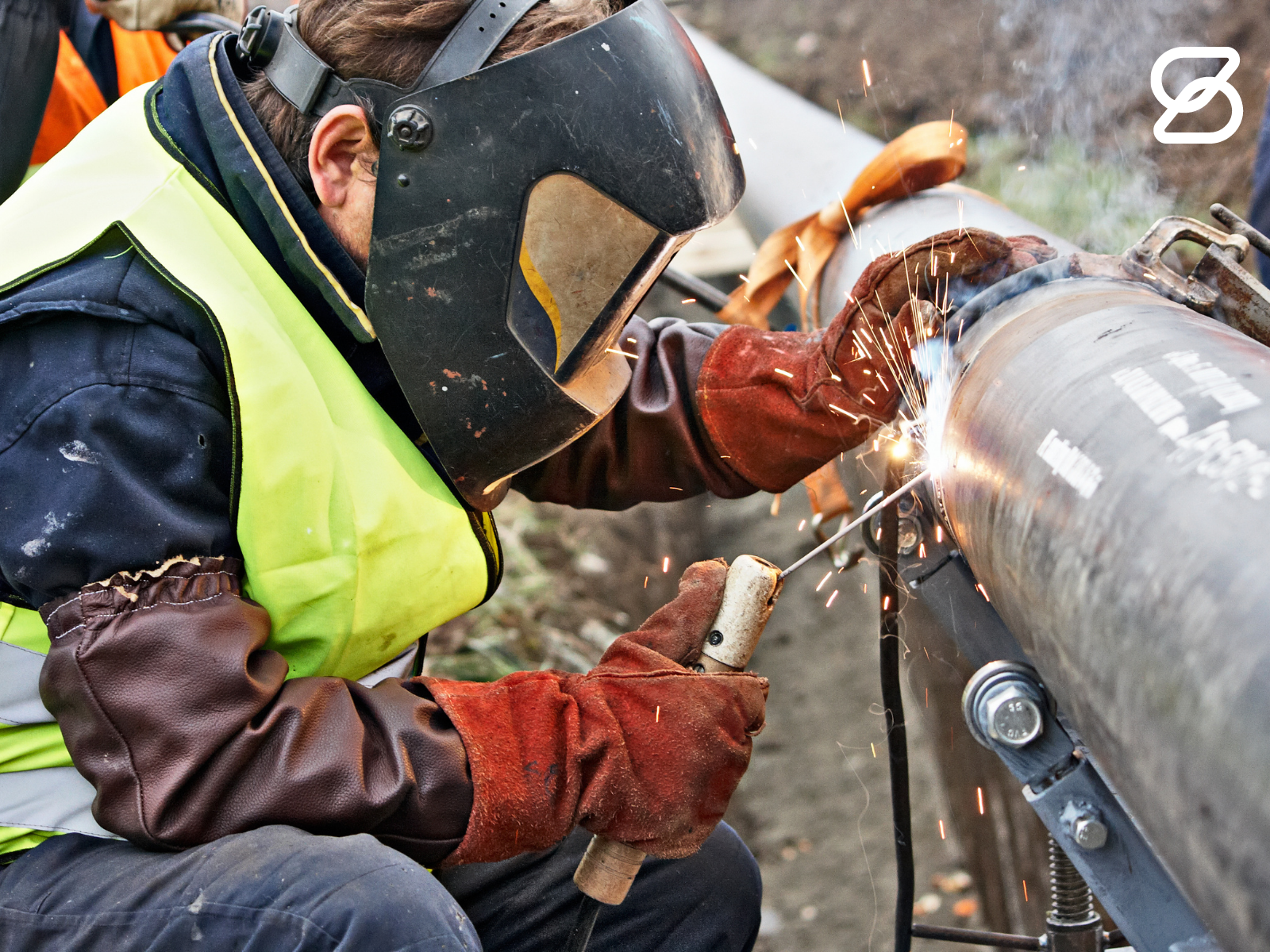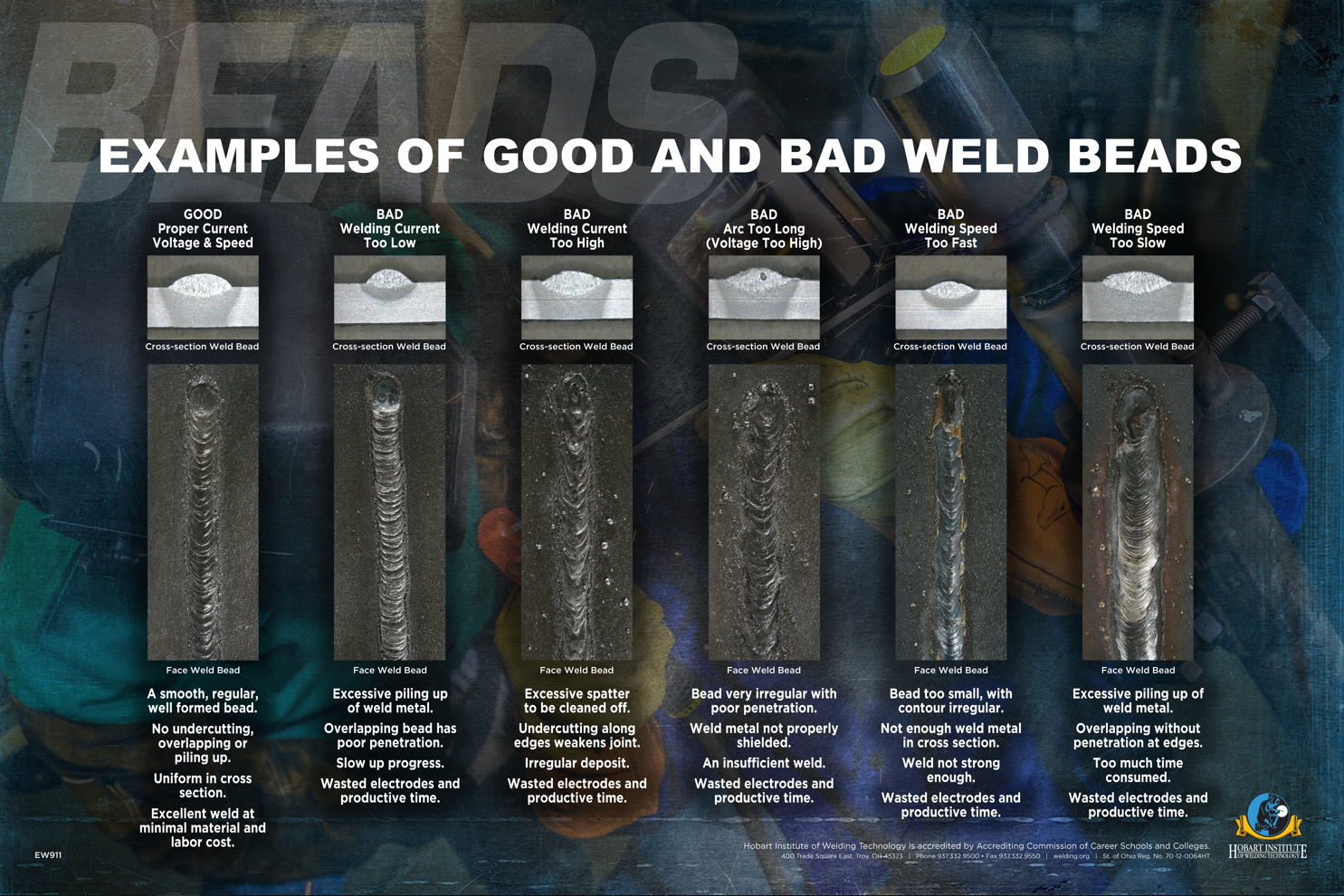Becoming good at welding takes time and practice. But how long exactly?
Welding is a skill that requires both knowledge and hands-on experience. Beginners often wonder how much time they need to invest before they can weld confidently. The answer isn’t straightforward because it depends on several factors. Your background, learning environment, and dedication all play a role.
Some people may pick it up in a few months, while others may need a year or more. In this blog post, we’ll explore the different aspects that influence how quickly you can become proficient at welding. We’ll also provide tips to help you get there faster. By the end, you’ll have a better idea of what to expect on your welding journey.

Credit: www.reddit.com
Becoming Proficient In Welding
So, you’re curious about welding and wondering how long it takes to get good at it? Well, you’re not alone. Many people find welding intriguing but are unsure of the journey ahead. Becoming proficient in welding doesn’t happen overnight, but with dedication and practice, you can master it. Let’s break it down into manageable steps.
Initial Learning Phase
The initial learning phase is where you get your feet wet. Think of it as the first day of school. You start by understanding the basics. This includes learning about different types of welding, such as MIG, TIG, and Stick welding. Each type has its own set of techniques and equipment.
During this phase, you’ll spend a lot of time practicing your hand-eye coordination. It’s a bit like learning to ride a bike. At first, it feels awkward, but with practice, it becomes second nature. A common saying among welders is, “Practice makes permanent.” So, keep at it!
- Learning safety protocols
- Getting familiar with welding equipment
- Understanding different welding techniques
- Practicing basic welds
Usually, this phase lasts a few weeks to a couple of months, depending on how much time you dedicate to it. Enrolling in a welding class or finding a mentor can speed up your progress. Remember, everyone learns at their own pace, so don’t rush it.
Building Fundamental Skills
Now that you’ve got the basics down, it’s time to build your fundamental skills. This phase is all about refining your technique and gaining confidence. You’ll move from simple welds to more complex ones. Think of it like leveling up in a game. Each level presents new challenges and requires more skill.
One of the best ways to improve is by working on small projects. Start with something simple, like a metal frame or a garden tool. These projects help you apply what you’ve learned and see tangible results. Plus, they’re a lot of fun!
- Focus on consistency
- Work on different materials
- Practice welding in various positions (flat, vertical, overhead)
- Learn to troubleshoot common welding problems
Building fundamental skills can take several months to a year. The key is to practice regularly and not be afraid to make mistakes. Mistakes are part of the learning process. As they say, “Failure is the best teacher.”
By the end of this phase, you’ll have a solid foundation and be well on your way to becoming proficient in welding. Remember, the journey to proficiency is a marathon, not a sprint. Enjoy the process, and you’ll get there.

Credit: www.spherion.com
Factors Influencing Learning Time
Learning to weld can be a rewarding journey. The time it takes to become proficient varies. Several factors influence this learning period. Understanding these can help you set realistic expectations and goals.
Personal Aptitude
Your natural ability plays a big role. Some people grasp welding skills quickly. They have steady hands and good hand-eye coordination. Others may take longer to develop these skills. Patience and persistence are key. Everyone’s learning curve is different.
Training Quality
The quality of your training matters too. High-quality instruction can speed up your learning. A knowledgeable teacher provides valuable tips and feedback. They ensure you avoid bad habits early on. Well-structured courses often lead to faster progress.
Practice Frequency
How often you practice is crucial. Regular practice helps reinforce skills. Daily or weekly practice leads to steady improvement. Sporadic practice can slow down progress. Consistency is important in mastering welding techniques.
Typical Learning Timeline
The journey to becoming proficient in welding is unique for everyone. Many factors affect this, including dedication, practice, and access to good training. Understanding the typical learning timeline can help set realistic goals and expectations.
Beginner Stage
At the beginner stage, learners focus on basic skills. This includes understanding safety procedures and handling equipment. Expect to spend around 6 months in this stage. Practice is key. Consistent practice helps in developing muscle memory. Simple welding projects are usually the first assignments.
Intermediate Progress
Reaching the intermediate level means having a solid grasp of the basics. This stage takes around 1 to 2 years. Welders start tackling more complex projects. They learn different welding techniques. The focus shifts to improving precision and speed. Mistakes become less frequent. Confidence grows with each project completed.
Advanced Mastery
Advanced mastery is the goal for many. It typically takes 3 to 5 years. Welders at this stage handle intricate and detailed work. They often work on specialized projects. Continuous learning and practice are essential. Advanced welders often mentor beginners. They share their knowledge and skills.
Progress may vary. Individual dedication and practice influence the pace of learning.
Types Of Welding Techniques
Learning to weld can be a challenging yet rewarding journey. There are several types of welding techniques, each with its own set of skills and tools. To help you understand better, let’s dive into three popular welding methods: MIG Welding, TIG Welding, and Stick Welding. By grasping the basics of each, you can determine the best approach for your needs.
Mig Welding
MIG welding, or Metal Inert Gas welding, is often the go-to for beginners. Why? It’s relatively straightforward and fast. In MIG welding, a wire electrode is fed through a welding gun, creating an arc with the workpiece. This method is great for welding thin sheets of metal and is widely used in automotive repairs and hobby projects.
- Easy to learn
- Suitable for thin metals
- Commonly used in auto repairs
Imagine it like using a hot glue gun but for metal. Simple, right? Well, with some practice, it can be!
Tig Welding
TIG welding, or Tungsten Inert Gas welding, is a bit more complex. However, it offers precision and high-quality results. In TIG welding, a non-consumable tungsten electrode creates the arc, and a separate filler rod is used. This technique is perfect for welding thin sections of stainless steel and non-ferrous metals like aluminum and copper.
- High precision
- Great for stainless steel and aluminum
- More control over the weld
Think of it as painting a masterpiece. It requires a steady hand, patience, and a lot of practice. But the results? Absolutely worth it!
Stick Welding
Stick welding, or Shielded Metal Arc Welding (SMAW), is one of the oldest and most versatile welding methods. It uses a consumable electrode coated in flux to lay the weld. The flux coating creates a shielding gas that protects the weld from contamination. This technique is commonly used in construction and repair work due to its ability to weld thicker materials.
- Versatile and robust
- Good for thick materials
- Ideal for outdoor work
Picture it as forging a sword; it’s tough and requires skill, but it’s incredibly strong. Plus, it’s great for working outside since the wind doesn’t affect it as much.
Each welding technique has its own learning curve and application. Whether you are just starting out or looking to improve your skills, understanding these methods will help you become a proficient welder. So, which technique will you try first?
Role Of Certifications
Certifications play a significant role in a welder’s career. They validate skills and knowledge. Employers often seek certified welders. Certification can boost job prospects and earning potential. It’s an important part of becoming good at welding.
Entry-level Certifications
Entry-level certifications are the starting point. They cover basic welding skills. Examples include the AWS Certified Welder program. This certification shows you can perform standard welding tasks. It gives a good foundation. Many employers require this for entry-level positions.
Advanced Certifications
Advanced certifications take skills to the next level. They include more complex techniques. One example is the AWS Certified Welding Inspector (CWI). This certification involves inspecting welds. It requires both practical and theoretical knowledge. Advanced certifications can lead to higher-paying jobs.
Specialized Certifications
Specialized certifications focus on specific areas. They include certifications for underwater welding or aerospace welding. These certifications show expertise in niche fields. Specialized welders are often in high demand. They can command higher wages.
Importance Of Hands-on Experience
When it comes to becoming skilled at welding, hands-on experience is crucial. Welding isn’t just about knowing the theory; it’s about getting your hands dirty and learning through doing. Imagine trying to learn to ride a bike by reading a book – it’s just not the same. The same applies to welding. Let’s dive into why hands-on experience is so important and explore various ways you can gain it.
On-the-job Training
One of the most effective ways to get hands-on experience is through on-the-job training. This means learning while you work. You get to practice welding every day and improve your skills quickly. Plus, you earn money while you learn – it’s a win-win situation!
Many companies offer apprenticeships or entry-level positions where you can learn from experienced welders. Here, you’ll face real-world challenges and learn how to solve them. This kind of learning is invaluable because it shows you what welding is really like, beyond the classroom or workshop.
Practice Projects
Another great way to build your skills is through practice projects. Think of these as mini assignments you give yourself. You can start with simple projects and gradually take on more complex ones as you improve.
For example, you might begin by welding two pieces of metal together in a straight line. Once you’ve mastered that, you can try different angles or materials. Here’s a simple table of practice projects to get you started:
| Project | Difficulty |
|---|---|
| Basic Metal Joint | Easy |
| Angle Weld | Medium |
| Metal Frame | Hard |
By working on these projects, you’ll build confidence and learn new techniques. Plus, you’ll have something tangible to show for your efforts – and who doesn’t love that?
Mentorship
Last but definitely not least, finding a mentor can be a game-changer. A mentor is an experienced welder who can guide you, give you tips, and help you avoid common mistakes. They’ve been where you are and know how to get to where you want to be.
Think of it like having a personal coach. They can provide feedback, answer your questions, and share their own experiences. This kind of one-on-one learning is incredibly valuable. If you’re lucky enough to find a mentor, make sure to listen carefully and apply what you learn.
To sum up, hands-on experience is key to becoming good at welding. Whether it’s through on-the-job training, practice projects, or mentorship, getting that practical experience will help you master the art of welding. So, roll up your sleeves and get started – your welding journey awaits!
Common Challenges
Learning to weld is a rewarding journey, but like any skill, it comes with its share of hurdles. Understanding these challenges can help you navigate them more effectively. Let’s dive into some of the common obstacles you might encounter as you hone your welding skills.
Technical Difficulties
Welding isn’t just about joining two pieces of metal. It involves understanding various techniques and tools. Here are a few technical challenges you might face:
- Equipment Mastery: Welders use different tools like MIG, TIG, and stick welders. Each has its own set of controls and quirks.
- Material Knowledge: Different metals require different welding techniques. For example, welding aluminum is not the same as welding steel.
- Precision: Maintaining a steady hand and keeping a consistent speed is crucial for a strong weld. This can be tricky, especially for beginners.
Safety Concerns
Welding is a high-risk activity. Ensuring safety is paramount. Here are some safety concerns every welder should be aware of:
- Protective Gear: Always wear a welding helmet, gloves, and protective clothing. Sparks and UV light can cause serious injuries.
- Ventilation: Welding fumes are hazardous. Ensure your workspace is well-ventilated to avoid inhaling toxic fumes.
- Fire Risks: Sparks can ignite nearby materials. Always keep a fire extinguisher close by and be mindful of your surroundings.
Consistency Issues
Consistency is key in welding. It takes time and practice to produce uniform welds. Here are some tips to improve consistency:
- Practice Regularly: Like any skill, regular practice helps. Try to weld a little each day to build muscle memory.
- Monitor Your Technique: Pay attention to your speed, angle, and distance. Small adjustments can make a big difference.
- Seek Feedback: Don’t hesitate to ask for feedback from experienced welders. They can provide valuable tips to improve your technique.
Remember, every welder starts somewhere. Don’t be discouraged by these challenges. With time, patience, and practice, you’ll find yourself overcoming them and becoming proficient in welding.

Credit: www.welding.org
Expert Tips For Faster Learning
Becoming good at welding can feel like a long journey. But with expert tips, you can speed up your learning. Here are some tips to help you learn welding faster and more efficiently.
Effective Practice Strategies
Practice is essential in welding. Start with simple projects. Gradually increase the complexity. Repetition helps build muscle memory. Try different welding techniques. This will give you a well-rounded skill set. Keep your practice sessions short but frequent. Consistency is key.
Learning From Mistakes
Mistakes are part of the learning process. Do not get discouraged by them. Instead, analyze what went wrong. Ask experienced welders for advice. They can provide valuable insights. Learn the common mistakes in welding. This will help you avoid them in the future. Always wear safety gear to prevent injuries.
Continuous Improvement
Always seek to improve your skills. Take welding classes or workshops. Stay updated with new welding techniques. Join welding forums or groups. Share your experiences with others. Learn from their experiences too. Never stop learning. Your skills will improve over time.
Frequently Asked Questions
How Fast Can I Learn Welding?
You can learn basic welding in a few weeks. Mastering advanced techniques may take several months of practice.
Is It Hard To Get Good At Welding?
Getting good at welding takes practice and patience. With proper training and dedication, skills improve over time.
Is 30 Too Late To Learn Welding?
No, 30 is not too late to learn welding. Many people start new careers at this age. Welding skills are in demand, offering great opportunities.
How Long Does It Take To Get Used To Welding?
Getting used to welding typically takes 2-3 weeks of consistent practice. Mastery can take several months.
Conclusion
Becoming good at welding takes time and effort. Practice regularly to improve. Learn from experienced welders for faster progress. Focus on basics first. Consistency is key. Don’t rush the learning process. Safety always comes first. With dedication, skills will grow.
Welding can be rewarding. Keep at it.

